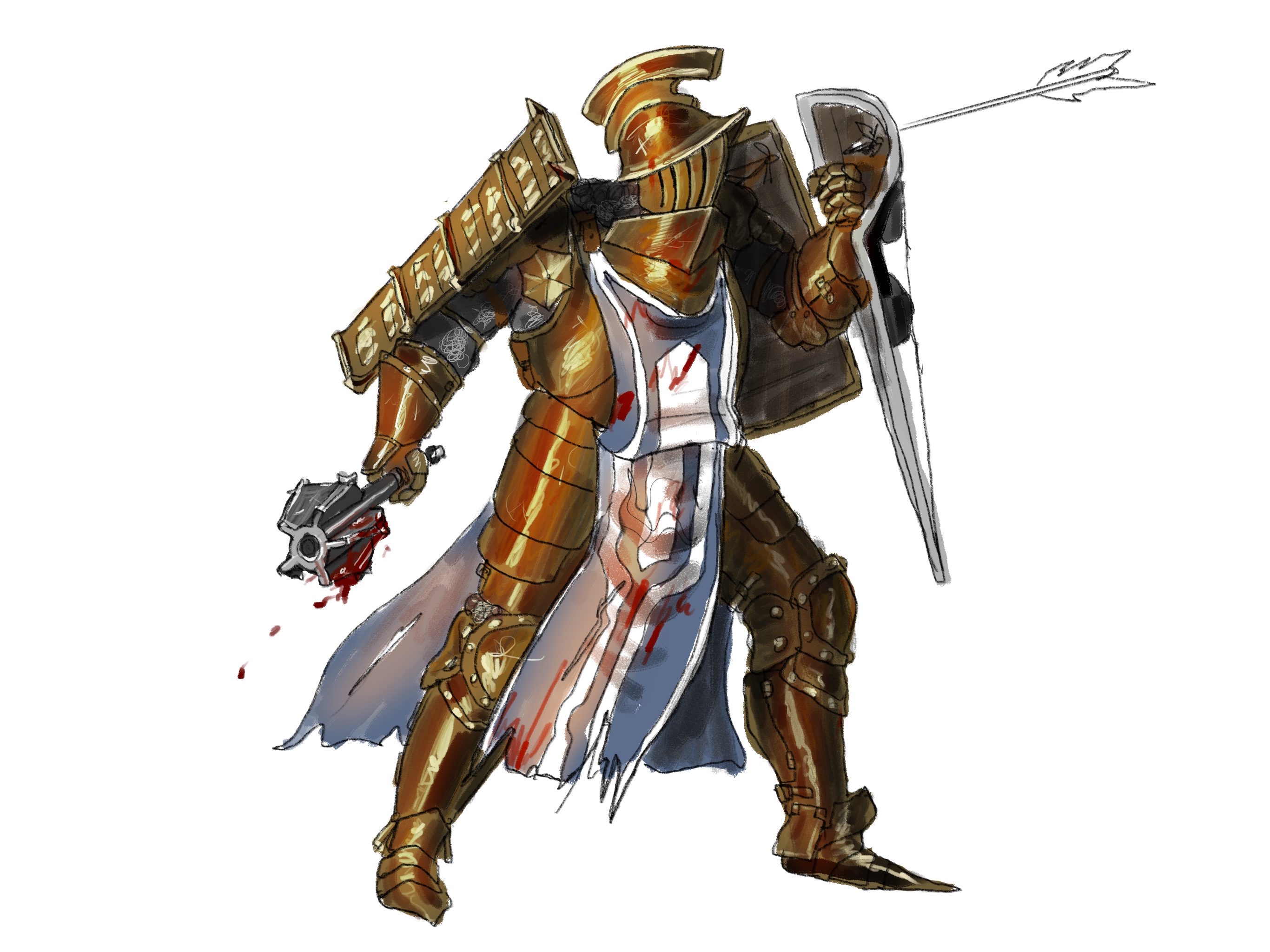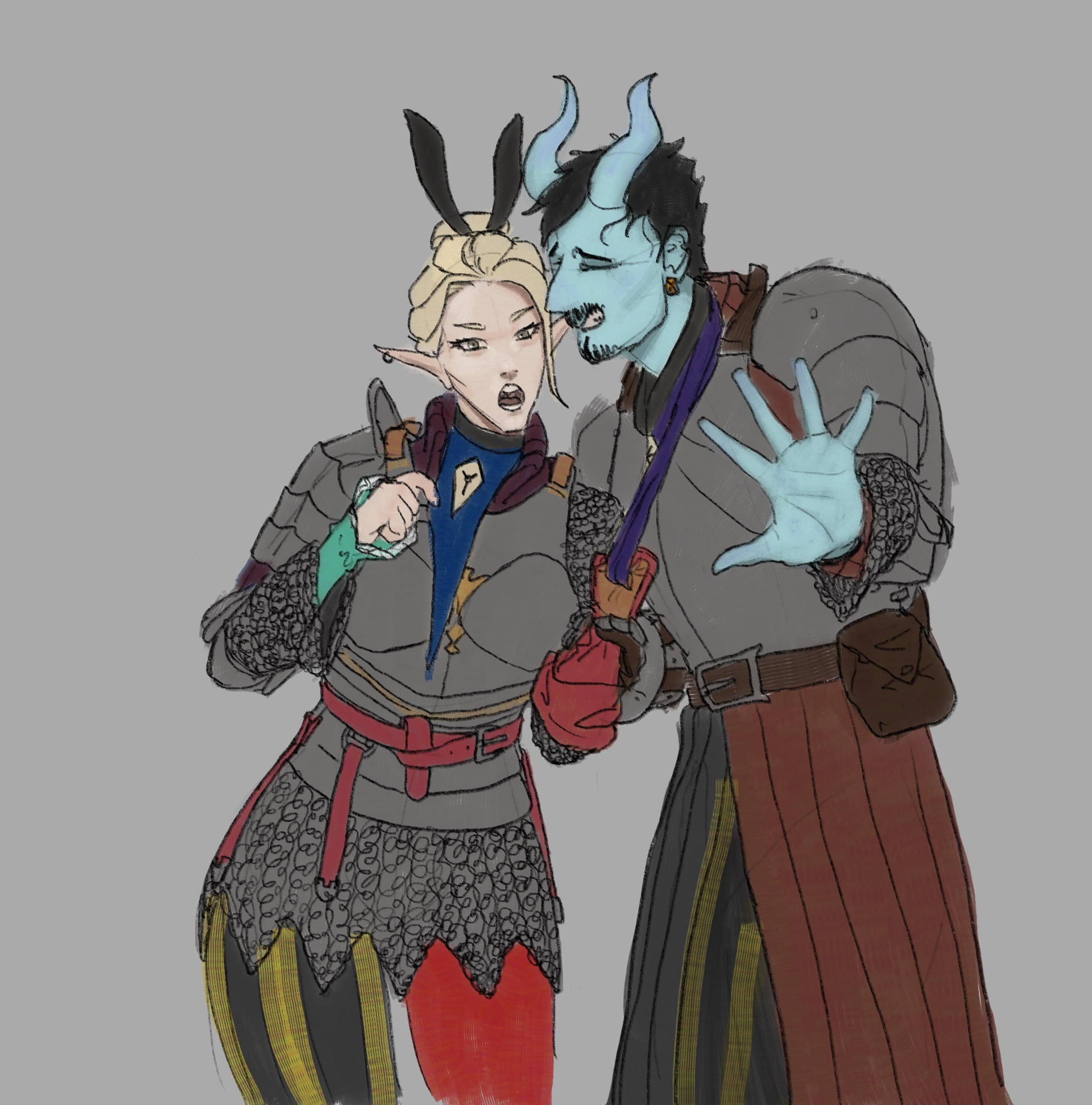So after I quit my last job, I started to write a script for a comicbook. Why?
I wanted to make a website, but had no idea what to put on it. A blog? Pffffff (ironic). A portfolio? Pffff (I hardly have fully completed projects). A webcomic? Aaaaah...
Original idea
It's hard to pinpoint my exact thought process, but my original idea came from this statement:
Take a word, a name, a term, or a statement... But take it literally.
And I don't know why, but my idea was the term "dungeon crawler".
Developing the idea
"Dungeon Crawler"...
A dungeon crawl is a type of scenario in fantasy role-playing games in which heroes navigate a labyrinth environment, battling various monsters, avoiding traps, solving puzzles, and looting any treasure they may find. Video games and board games which predominantly feature dungeon crawl elements are considered to be a genre.
But when taken literally...
It's someone crawling inside a dungeon. Maybe while prone. Maybe on 4 fours. Maybe like a snail. The dungeon? Perhaps a literal prison, perhaps a crypt.
You might see where I'm going with this...
Fully manifesting idea
So the original idea for the comic was that a generic fantasy RPG adventurer goes into a dungeon, but breaks both their legs. Now they have to literally crawl out of the dungeon to survive.
The idea seemed alluring from the get-go. It sparks the imagination and really makes you wonder how they'd survive.
So let's get to work then, shall we?
Draft 1

Draft 1 took me 3 months to complete.
Deadass.
The reason was mainly this: While the idea of an adventurer crawling inside a dungeon sounds interesting, it's actually not. So what do you do? You introduce obstacles. Obstacles that would not be such if one had legs and could walk/stand/run/fight. But our adventurer cannot do any of that. So the very beginnings of my story looked like this (MC = Main Character):
MC breaks their legs.
MC comes across a door, they cannot reach the handle to open it.
MC comes across a collapsed walkway that would be easy to climb if one could stand and reach the ledge.
MC comes across goblins. They cannot fight, thus have to hide and distract them.
MC comes across a... Etc.
While brainstorming, I realized the limitation of my concept: While telling a story about a parabolic knight offers interesting obstacles, they eventually boil down to just 3 challenges:
Can't reach something
Can't move quickly enough
Have to be taken care off
That last part especially showed that I basically had to add another character, a caretaker, into the story. Otherwise, it would be basically a super short story that would leave almost no impact.
Expansion of scope
I started by introducing that caretaker character. But now I could extend the story with more obstacles: This time, the MC would have help. So now I could make scenarios where there was fighting involved, but the caretaker would do it instead.
This was pretty boring. I found it hard to have any kind of an interesting narrative around this.
So I added more characters. Each of them served a purpose of introducing different themes, issues and also world-building into the story.
The problem with world-building...
I caught myself writing "Jesus christ, what is that?!" in the dialogue. I asked myself "Hold up: Does Jesus exist in this fantasy world?!".
So now, rather than taking it out, I created AN ENTIRE RELIGION just so people could exclaim the name of a divine being in vain.
World-building addictive. It really is. I found a map generator called Azgaar Fantasy Map Generator. I spend quite a many hours messing around with it to create a world for my story that's set in 1 location...
But it was interesting and brought intrigue into the world. The character backstories were an opportunity to showcase the world, to show why characters are and act the way they do. My original inspiration for the world was "Shrek K-18". So basically having modern world equivalents, but with a fantasy paint over it. Think of a limousine => long horse carriage.
Bigger scope, more narrative...
The main issue here became that I wanted a diverse set of characters. Not how Twitter defines "diverse", but a many races and many different character classes. I wanted a rogue, a knight, a wizard, a ranger, a paladin, etc.
The problem was how to tie all of that together. How to introduce interesting problems for all. I struggled with this immensely in draft 1, and I also do in draft 3... Mainly because I decided to do something that you SHOULD NOT do on your first ever proper story:
Writing from a single POV
I decided about 30% along draft 1 that I would indeed write everything from the POV of the main character. This meant couple of things:
No scenes without MC.
If there is one, it's a flashback narrated to MC by someone else.
If MC doesn't hear it / see it, I don't show it.
You experience what MC does, not what ACTUALLY happens.
This restriction/design choice made it sorta easier to write scenes as I knew where I should focus on. But it also made it really hard to develop all the other characters. Even in draft 3, some characters are just poorly defined because the MC doesn't interact with them more than once in the entire story.
This is why it's important to have those character take up some "screen time" in the comic as "background shenanigans".
Background Shenanigans™
I REALLY liked Don Rosa's Donald Duck comics as a kid. And I STILL DO.
The main reason wasn't just his detailed illustration, but his humour. If there was a scene with a character dishing out some dialogue/exposition, there'd always be a visual gag happening on the page. Either on the foreground or, most often, in the background.
Like 2 characters are discussing something, then there are 2 other characters playing rock-paper-scissors in the background.
That's not a knee-slapper scene, but you get my point. Because it is veeeeeeeeeeeeryyyyyyyyyyy boring to read 2 people just talking in a comic. Like here's some context:
2 people talking
Movie: Interesting
Acting, movement, music.
Book: Interesting
Inner thoughts, detail, colourful expression.
Comic: Boring
Just still images and text boxes...
Comics don't have that much they can do to hook you in with exposition. Yes, that's what I call dialogue in a comic: Exposition.
Dialogue = Exposition
I have a lot of dialogue in the story. Most of it is dialogue.
You might say this is bad. "Show, don't tell!", right? But people take that advice too literally, where they think that you literally cannot get a point across by someone saying it, because that's "telling". If a character "tells" someone something that has layers and layers of subtext, is that still "telling" instead of "showing"?
That's the main thing I tried to focus with the dialogue: Subtext. A lot of it.
Because people in real life don't state what they want or feel outright. They don't monologue. The reader should be given some "barks" that they can use to deduce what the character is all about. This is how you SHOW with dialogue. And this is how I can have such large amounts of it yet it keeps being engaging (I think).
Draft 1 finished
After I had finished draft 1, these were the stats of the Word document:
Pages: 602
Words: 331 200
Characters (no spaces): 1 490 277
Characters (with spaces): 1 804 333
Paragraphs: 17 612
Lines 26 775
You might be curious about the lines and page count. As this is a script with a lot of dialogue, I have many pages worth where a line might only have 20 characters as someone says "Hello" or something and that's it.
The page count also includes drafting and planning of the world, some culture, history, character bios, and themes of the story.
